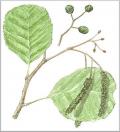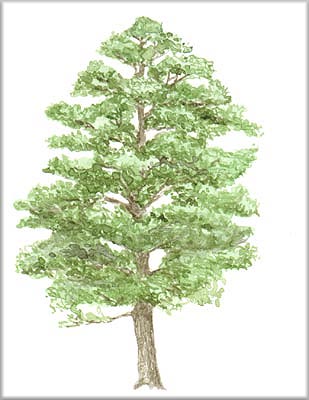European Alder - Alnus glutinosa
Ever-present along rivers and running water, this is the species of tree that can tolerate the highest degree of soil humidity.
It is unmistakable for its straight and undivided trunk (curved at the base if it grows on a strongly sloping bank) and its typically pyramid-shaped crown with its branches almost perpendicular to the trunk.
Another useful characteristic for identification are the round leaves without a pointed tip, and the fruit which looks like a tiny cone, always found scattered over the ground below and for most of the year on the crown.
It grows quickly if well exposed to the light, reaching up to 25-30 metres in height but it does not live long.
It occurs in association with Poplars, Willows, Ash, and Elms, but it can also form pure stands. In mountainous areas it is often substituted by the Speckled Alder (Alnus incana).
Since antiquity, man has used the European Alder for the foundations of his dwelling places in lowland areas: the city of Venice, like other Palaeolithic palafittes, is supported by millions of trunks of this tree.
The wood is traditionally used for making clogs, whilst tannin is extracted from the bark. Today the tree is widely used in natural/biological engineering projects to consolidate river banks and revitalise streams.





